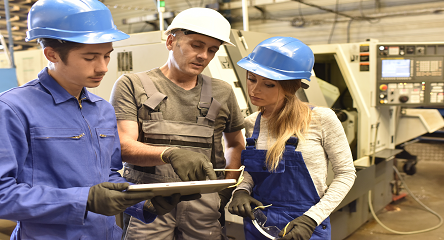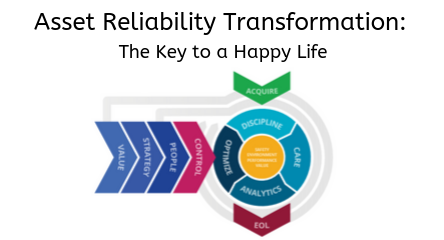Introduction
Recently I sat on panel to discuss the aging of the workforce. The panel was made up of representatives of several manufacturing companies, and they outlined their company’s current situation regarding the coming retirement of so-called baby boomers, the first of whom are now into their sixties. I happen to be one of them. The companies outlined the demographics of their workforce and their plans to mitigate these anticipated retirements. To sum it up, by 2015, one in five of their workers will be eligible to retire, with some 19 million people older than 55 and eligible. Replacing all that experience, particularly skilled craft people such as mechanics, electricians, electronic technicians, etc., will be difficult. Various approaches are being taken, typically in some combination related to 1) reinvigorating a moribund apprenticeship program; 2) working with local trade schools and community colleges to develop skilled workers; 3) re-hiring retirees either part-time or full-time who want to come back to work on a contract basis; and 4) more intensive internal training programs. Many have called this pending loss of skilled workers a crisis in waiting.
My experience has been that most companies are “dabbling” in addressing this potentially serious problem. Yes, they have plans, and yes, to some extent these plans are being implemented. However, the current economic malaise is hindering even the best efforts. Most CEO’s are simply unwilling to hire (or re-hire) people given the current economic uncertainty. Likewise, most CEO’s are unwilling to commit large amounts of capital and human resources to training programs, facilities and supporting institutions to address the problem at hand. I would be too. When the need arises, they will likely respond with the appropriate commitment and intensity. Until then, the solutions for addressing this problem are not likely to be fully applied. The good news is that since most companies are using this cautious approach, each one has competitive parity, and so there is no competitive advantage or disadvantage to most. If only our crystal balls worked better…
Mitigating Factors
My suggestion is to take heart – there will be several counter balancing or mitigating factors that will minimize the size of this “crisis”. First, manufacturing productivity has been steadily increasing over the past 40 years. Manufacturing is now only 12% of GDP, whereas some 40 years ago it was about 30%. Manufacturing is following the path of agriculture. The agricultural sector was over 50% of GDP in the early 20th century, but is now only about 3%. Manufacturing is likely to follow the same path, as technology, better equipment, automation, and so-called best-practice increases productivity. As it does, the need for additional labor will be less.
Second, only about half of the workforce that could retire will actually be able to do that. Various surveys indicate that about half of the workforce hasn’t saved enough money to retire and live in the lifestyle to which they have become accustomed. Thus they will likely be obligated to continue working until they sufficient money, or until their health or emotional commitment to retirement forces them into it. Further, many workers don’t want to retire, even if they could. Or, alternatively, they may retire, only to pick up a new career in a related, or even unrelated, field. Thus, many will be re-hired by their former company as contractors, or they will take similar or even unrelated jobs for different companies. For many, you can only fish or golf so much before it too becomes boring and you’re looking for a new opportunity. I fall into this category. I don’t plan to ever truly retire in the traditional sense. Unless my health and/or mental competency dictate otherwise, I plan to work at some level until I fall off the perch. Having said that, I do intend to slow down as time takes its inevitable toll on my ability. As these kinds of factors play out, the need for additional skilled labor will be mitigated.
Related to improved productivity discussed above, my data indicate that the current level of utilization of manufacturing assets as measured by overall equipment effectiveness (OEE) and/or asset utilization (AU) is about 50-60% in batch and discrete plants, and about 70-80% in process plants. This compares to a best-in-class of 80-90% or more. Think about this as to its impact on the need for additional workers. If we could improve our reliability and productivity, making it easy for people to do the right thing, and get our OEE from 50% to 75%, we could produce 50% more product with the same number of people; or alternatively, we could produce in a 6 day-2 shift operation the same amount as what we did produce in a 6 day-3 shift operation. We’ll need fewer people to produce a given amount. Productivity will have increased, mitigating the need for more people.
On this last point, my view is that this approach is not a good thing to do, it’s a must thing to do. We as consumers tend to buy the cheapest product that meets our perceived requirements. We work to maximize the benefit we receive for our limited income. Walmart has been extraordinarily successful applying this very basic principle. This in turn puts pressure on prices, and costs. Manufacturers must put the cheapest product in front of us, and still make a profit. Year on year improvements in productivity are essential for every business’s survival. These improvements in productivity also provide the gross profit that allows us to invest in R&D and new product/process development. It’s a virtuous circle.
Finally, a comment related to popular culture. Popular culture drives youth behavior. We’re currently bombarded with TV shows starring crime scene investigators and lawyers, along with so-called reality TV (none of these reflect the reality of my life, but I digress). In any event these have spawned a substantial increase in the number of kids wanting to be crime scene technicians or lawyers. While there’s nothing wrong with this per se, it’s not particularly realistic. Hopefully the number of criminals will decline with an improved economy and better education. Likewise, this should mitigate the need for more lawyers. My view is that even with the above mitigating factors, we will still need a skilled workforce to assure a strong manufacturing base, one of the sources of original wealth from which all other wealth is derived. Someone still has to make the things we buy. Why not make them here, keeping the jobs here, and maintaining a strong economy? To do this we will need a skilled workforce, and not necessarily skilled with a college education. Many kids will either not have the desire, or the financial capability to attend a four year college. We need to make those jobs attractive, and to create a framework for them to develop the related skills so they can become productive citizens, with or without CSI.
The Plan
Most companies that I know have a plan for addressing the aging workforce. But, my impression is that these plans are being implemented very cautiously. If you do not have a plan, you should. Potential approaches for managing and minimizing the impact of an aging, and retiring, workforce include:
- Re-starting or expanding an apprenticeship program.
- Working with local institutions like trade schools and community colleges to develop training programs for skilled workers.
- Setting up internal training programs to train your workforce in your specific requirements as the need arises.
- Hiring retired employees as contractors, either on a part-time or full-time basis.
- Improving your productivity through improved reliability and capability of your production systems – increase your OEE from 50% to 75%.
- Being innovative about creating other practices that will further mitigate your need for workers, whether employees or contractors.
Develop a plan that encompasses all these, and more, so that you can quickly implement it as the economy evolves, and as your business needs arise.





